The Junkyard Band And DC Take Over Miami To Celebrate 50 Years Of Go-Go
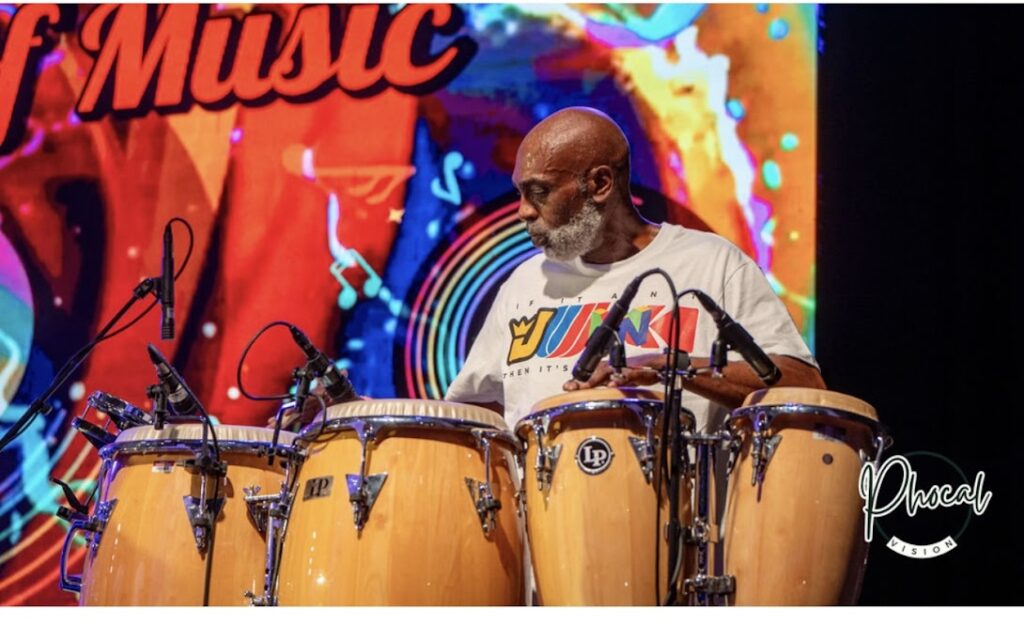
The 17th Annual Miami Beach Takeover wrapped a four-day cultural festival at the end of last month that celebrated community, art, and the vibrant rhythms of Washington, D.C.’s native Go-Go music.
The event, produced in collaboration with the City of Miami Beach and the Miami Beach Visitor Convention Authority (MBVCA), featured a diverse lineup of events, including a lively Go-Go and R&B concert at the iconic Miami Beach Bandshell.
Local and visiting crowds were treated to a range of experiences, from daytime events at Art Deco hotels to a community service beach sweep clean-up morning.
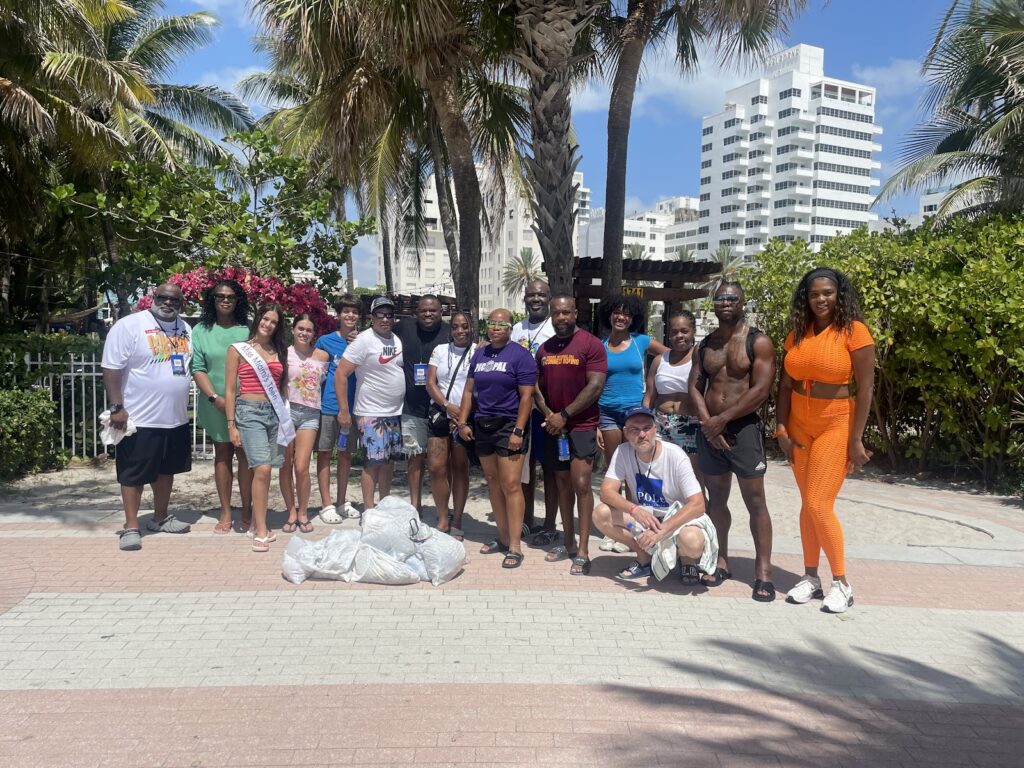
The festivities culminated in “The Art of Go-Go Culture Fest,” a concert showcasing performances by bands– Black Passion, Top 5, and the legendary Junkyard Band.
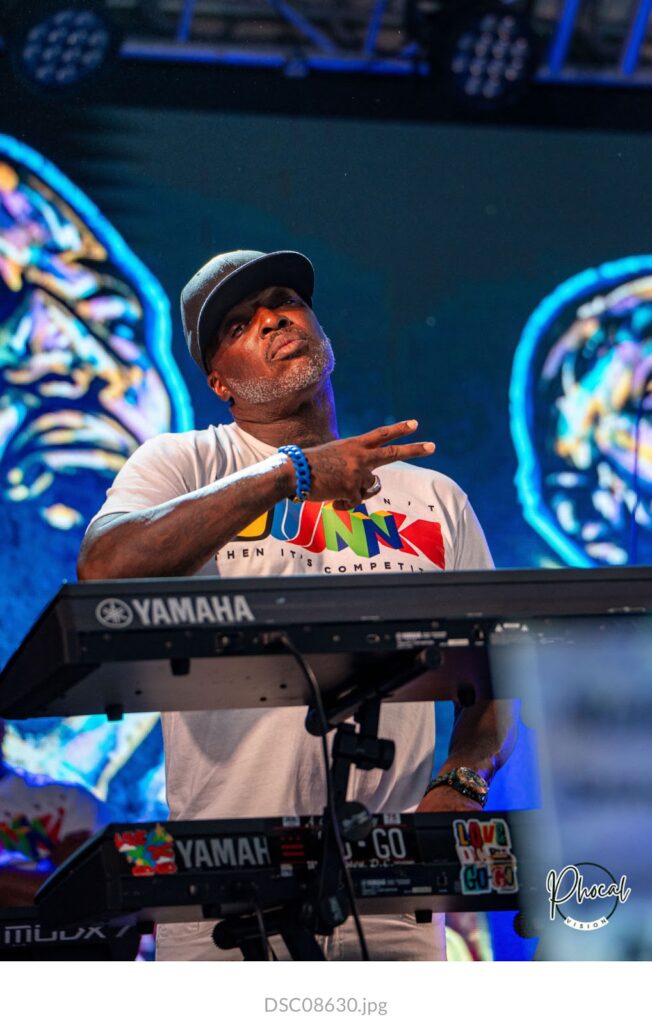
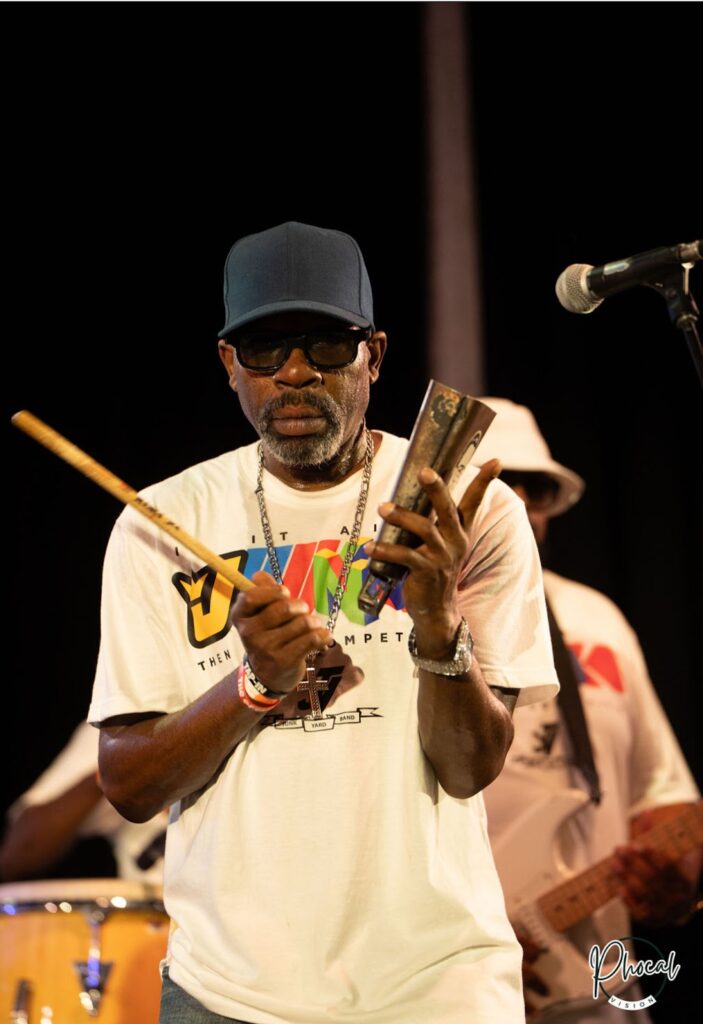
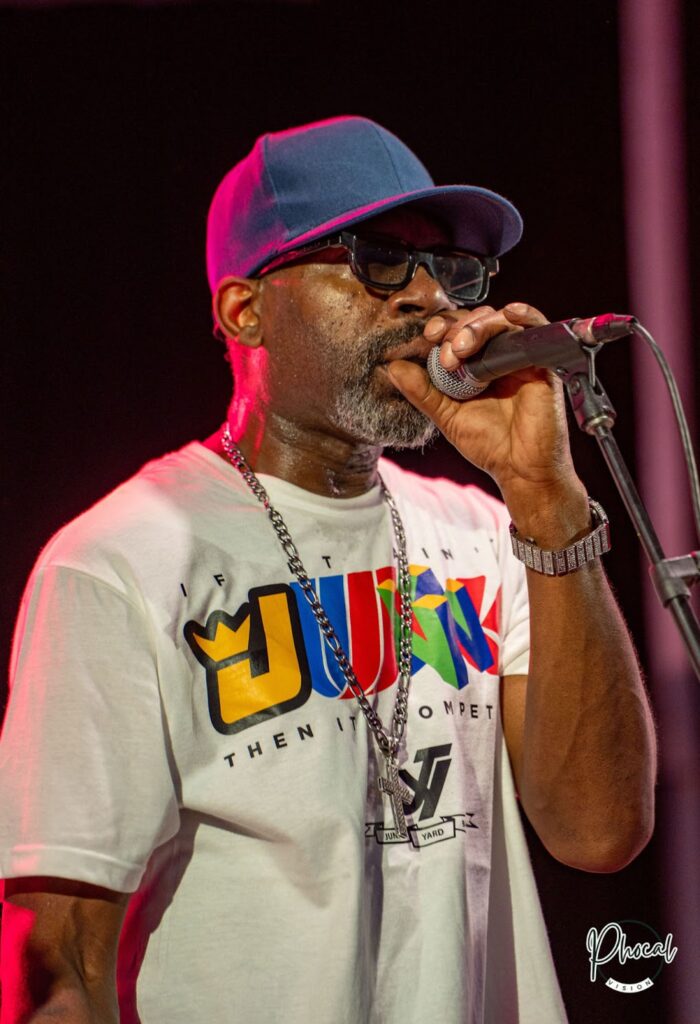
At the festival, visual artist Demont Pinder created a live painting to memorialize the late actor Malcolm-Jamal Warner. Pinder, along with Miami Takeover co-owner Wylie Konard, posed with the finished artwork, a poignant tribute to the community and culture the event celebrated.
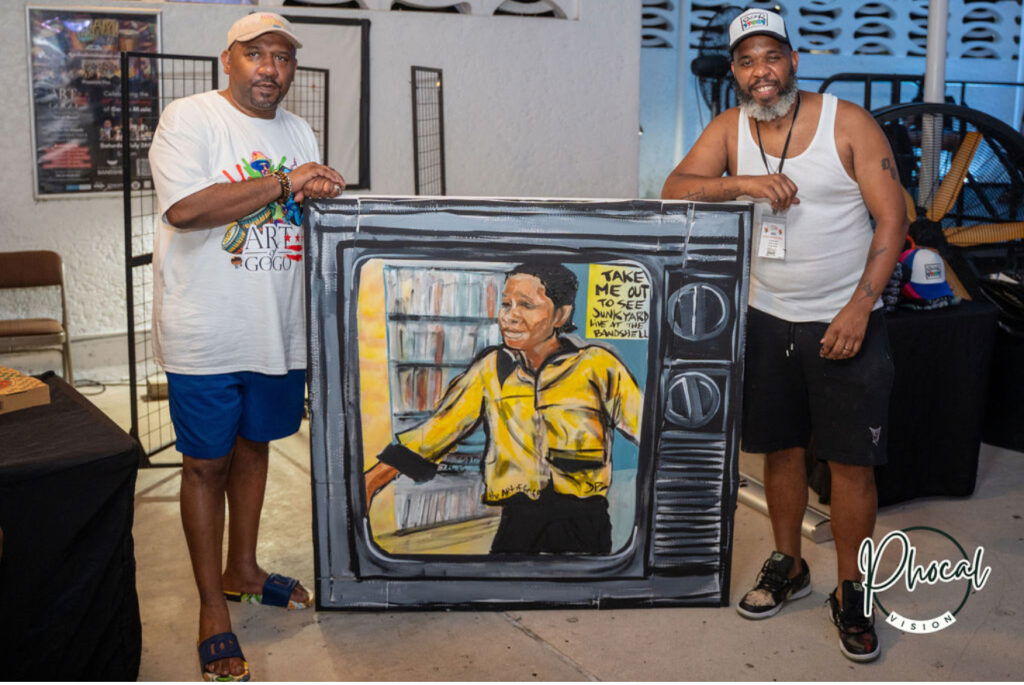
The unique sounds of Go-Go music took center stage at the Bandshell. Junkyard Band members Gerald Lattimore, James Jasper, and manager Moe Shorter discussed the genre’s history and evolution in an interview. Shorter explained how Go-Go adapts to stay current.
“Go-Go is kind of… it goes with whatever is hot,” Shorter said. “It’s still Go-Go, but it’s influenced by whatever is kind of hot at the time.”
Lattimore elaborated on this idea, drawing a comparison to jazz music. “Early days, like with Chuck Brown, it was kind of like more like disco, funk style,” he said, before noting how it evolved to become more “bass-heavy, drum-heavy” in the 1980s as rap gained popularity.
Favorite Bands and Go-Go’s Ever-Changing Sound
The band members also shared their personal favorites, with Lattimore mentioning Air Raid as a top choice.
“They were very dynamic in their performance… they got a lot of energy,” he said, recalling the band’s powerful but short-lived heyday.
Jasper cited Rare Essence as his favorite band, noting that hearing their music as a child from older family members is what made him fall in love with the genre. He used Rare Essence as a prime example of Go-Go’s stylistic evolution.
“Listen to ‘Body Moves’ and listen to ‘Work The Walls,’ and you’re going to be like [they’re not the same band],” he said. “Because ‘Work The Walls’ is like a rap song,” a stark contrast to the earlier disco-funk sound of “Body Moves.”
The Movement
The band members also reflected on how Go-Go, born in D.C., expanded its reach. They noted that the genre’s spread was not a planned effort, but rather an organic process fueled by college students.
“When people would like to come to D.C. to go to school, they pick it up, they take it back home to their city [and] town, and it grew from there,” Jasper said.
Go-Go’s longevity was also a central theme. The genre has survived challenges such as gentrification and even a period when it was banned from specific venues. The Junkyard Band took a political stance against the ban, fighting for the music’s right to exist.
“It kind of fuels you in the sense of, ‘they don’t want me to do this.’ And just for that reason, I’m going to do it,” Lattimore said. “The government doesn’t want it, but the people want it.”
The band members concluded that what makes Go-Go so powerful is its unique, deeply felt rhythm that can’t be taught.
“It’s a feel,” Shorter said. “You can’t even say, ‘put the minor nine on it.’ You got to feel it.” He added that a Go-Go band can get an audience moving in a way that even highly skilled musicians in other genres cannot, describing the music as “spiritual.”
The Junkyard Band plans to celebrate its 45th anniversary with a private soiree.
“The Ultimate Celebration Is Finally Here! Junkyard Band, Moe Shorter & Street Records Presents…#JunkyardBand #45th #Anniversary!! Saturday, August 16, 2025… 7 p.m. until 11 p.m. ALL THE INFORMATION IS BELOW & ON THE FLIER 
The Roots of Go-Go
The Beat Don’t Stop, a feature-length documentary by TV One, traces the founding of go-go music in D.C. to a formative moment in a club called the Maverick Room in the city’s Edgewood neighborhood sometime around 1974. A musician named Chuck Brown was grooving with his band, the Soul Searchers, and decided he wanted his percussionists to continue playing in between songs so the dancing never ceased.
In time, Brown became “The Godfather of Go-Go” (although bands like Black Heat and the Young Senators also deserve credit for laying the foundation) and created the “pocket,” which is the signature groove of the music, connotating the rhythmic interplay between the drummer, conga players, and additional percussionists. While the beat ebbs and flows, the vocalist then begins a call-and-response with the crowd, allowing for an array of shout-outs and creating a wholly communal atmosphere.
Inside its grooves, go-go contains multitudes: the smoothness and sexiness of soul and jazz, the slap-bass of funk, the powerful rhythm of R&B, and the call-and-response of gospel. It is a music of celebration and participation, as go-go truly thrives with a crowd to dance to the groove and respond to the singer’s proclamations.
In 1978, Brown released “Bustin’ Loose” as a single, and soon, the song hit the Billboard charts.
Over the next few years, a vibrant go-go music scene emerged across the District. Brilliant Black musicians, many of whom had attended local high schools and participated in epic marching band competitions, formed large groups featuring keyboards, horns, and strings, in addition to the essential percussion instruments.
However, aside from brief moments in the cultural limelight, including an unsuccessful 1986 studio film entitled Good to Go starring Art Garfunkel (of all people), singles like the aforementioned “Bustin’ Loose” and Experience Unlimited’s (EU) “Da Butt” (featured in Spike Lee’s 1988 film School Daze) and the 1987 Go-Go Live concert in front of a packed Capital Centre (a venue in Landover, Md. usually reserved for national acts), D.C.’s go-go music never captured the attention of the masses the way it could have thanks to an array of factors.
During Go-Go’s initial surge, the city embraced its potential. Mayor Marion Barry’s Summer Youth Employment Program inspired teens to bring instruments and bond over the music. At the same time, D.C.’s Department of Parks and Recreation even drove bands around in “Showmobiles,” allowing groups to perform free go-go concerts in multiple neighborhoods during the summer months.
Unfortunately, as the 1980s wore on, drug use and violence became part of the District’s story, as the crack epidemic ravaged the region, which led to confrontations at concerts that would spill over into the streets. Although broader systemic issues were at play, lawmakers began to openly blame go-go concerts for the city’s strife. Curfews were instituted, clubs refused to let go-go bands perform, and gradually, hotbeds for the music were shut down. School budgets in the city also shrank, causing music education programs to be cut, which in turn cut off a vital breeding ground for the city’s go-go musicians and the sense of community they were able to build. Instead of embracing an art form that served as an outlet for those troubled by the streets, critics made Go-Go music a scapegoat.
Even in the face of criticism and governmental interference, D.C.’s bond with the music has never ceased. Local radio stations still play marathon late-night go-go sessions, “Bustin’ Loose” has become a mainstay at local sporting events, and acts such as Chuck Brown (who passed away in 2012) and Rare Essence are iconic institutions. And in 2019, another vital chapter was added to Go-Go’s story.
A Metro PCS store in D.C.’s Shaw neighborhood had been known for years for its embrace of go-go, with the distinctive music playing throughout the day. However, thanks to the complaint of a resident at a nearby luxury apartment complex, the store’s owner was forced to mute the music. Washingtonians responded en masse with rallies and live music, leading to the coining of the #DontMuteDC hashtag by a Howard University student. The store unmuted the music just days later, and by February 2020, Mayor Muriel Bowser had signed a bill that made go-go the official music of D.C.
The mayor’s office has committed to implementing programs and even opened a museum in November 2024 that will preserve and perpetuate go-go music, along with the incredible culture and history the music has built.
RELATED CONTENT: Melky Jean, Saint Sauveur 1972 Rum, And The Bold Reclamation Of Haitian Heritage
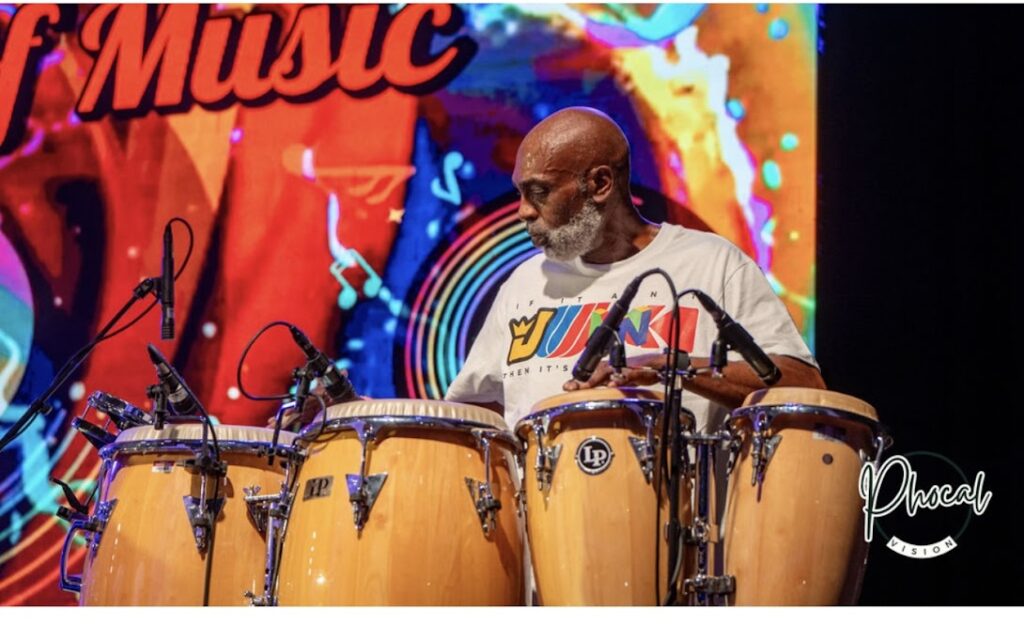

Responses